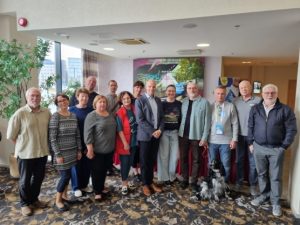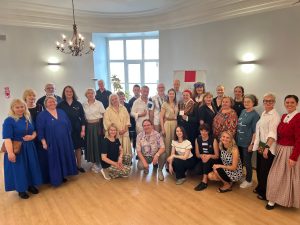Professional Development in Latvia and Estonia
Visit to Estonia
On July 4–6, the artistic director of Vytautas Magnus University Education Academy’s song and dance ensemble Šviesa, Jolanta Kisielytė-Sadauskienė, together with a 14-member delegation organized by the Lithuanian National Culture Centre, visited the Estonian Song Festival.
The purpose of the visit was to become familiar with the festival’s artistic content, structure, and organization, to observe the course of the event, and to strengthen international cooperation.
The delegation attended the Dance Festival held at Kalev Stadium in Tallinn, where nearly 11,000 dancers performed. They also observed the folklore program, which featured 765 performers from different regions of Estonia, the opening concert of the Song Festival, and the main Song Festival concert on July 6, which lasted more than seven hours and attracted about 79,000 spectators. The program, reflecting the Estonian choral music tradition, was performed by more than 32,000 participants.

Visit to Latvia
On July 11–13, the artistic director of VMU EA’s song and dance ensemble Šviesa visited the 13th Latvian School Youth Song and Dance Festival in Riga. The creators and experts of the Lithuanian Song Festival—conductors, choreographers, and program coordinators—also took part in the visit to observe this impressive cultural event and to gain inspiration and experience.
During the visit, the Lithuanian delegation members met with organizers of the Latvian and Estonian Song Festivals as well as Baiba Molnika, Secretary-General of the Latvian National Commission for UNESCO. They discussed issues related to the development of artistic programs, repertoire selection, communication, and accessibility of infrastructure.

The Lithuanian representatives attended the festival’s key events: on July 2 – the folk dance concert Es atvēru Laimas dārzu at Daugava Stadium, where about 19,000 children presented a dance program. On July 13 – the Radi procession, which gathered around 38,000 participants. The concluding Song Day concert Te–aust at Mežaparks Great Stage, which featured 11,399 choristers, 1,474 members of wind orchestras, and 1,000 folklore performers. The concert was attended by about 30,000 spectators.


